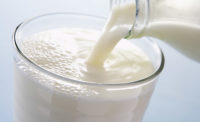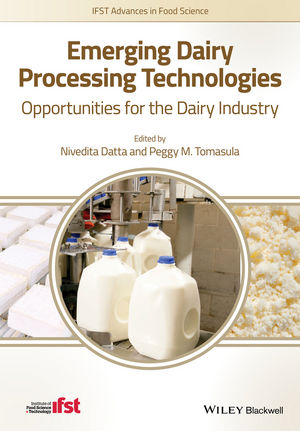Opinion
National Dairy Month is a time to reflect on the successes of the dairy industry
Milk is a marvel. It’s an inexpensive source of high-quality protein and an extremely versatile ingredient.

No. No. No. No. No. That’s the tenor of the national conversation about food today. Consumers and advocacy groups are saying no to genetically modified organisms, hormones, high-fructose corn syrup, fat, sodium, gluten, artificial colors and preservatives, and a string of other ingredients often used in dairy foods and beverages.
As I write in "The 'no' choir sings a song of more transparency in labeling," when food manufacturers spend time to defend ingredient choices, they have less time to promote the health and nutrition of what they are selling. For the dairy industry, add the issues of animal welfare and sustainability to the agenda. None of these subjects can be avoided, but the health benefits of dairy must be promoted forcefully, frequently and forthrightly.
June is National Dairy Month, so there is no better time to talk about milk and the products that derive from it.
So much for so little
Milk is a marvel. It’s an inexpensive source of high-quality protein and an extremely versatile ingredient. As our friends at the Dairy Council of California note, a cup of milk costs about 25 cents. For two bits, a milk drinker consumes 30% of her Daily Value of calcium, 26% of riboflavin, 25% of vitamin D, 25% of phosphorus and 10% or more of vitamin B-12, protein, potassium, vitamin A and niacin.
Fluid milk can be converted to skim milk powders. According to the Department of Agriculture, the dairy industry produced 1.47 billion pounds of nonfat dry milk in 2013. Other dairy ingredients derived from milk include (in decreasing order of production) lactose, dry whey, whey protein concentrate, condensed sweet whey, and reduced lactose and minerals. These ingredients are used domestically and worldwide for infant formula, sports drinks and prepared foods.
Milk and yogurt are two high-protein foods. Americans tend not to consume enough protein over the course of a day, and when we do get it, we eat it at dinnertime. Nutritionists advise consuming protein throughout the day because it keeps us feeling satisfied and that can help us not to overeat. Adult men need about 56 grams daily and women about 46, according to the 2010 Dietary Guidelines for Americans.
Yogurt is another marvel of the dairy case. A cup of one brand contains 14 grams of protein (compared to eight in a cup of milk), and one Greek brand has 23 grams. Dairy processors have taken notice of the increasing popularity of this dairy food. Yogurt production more than doubled in 10 years to 4.7 billion pounds in 2013.
Yogurt is versatile. Americans eat it for breakfast, lunch, as a snack and as a dessert, and use it as an ingredient in recipes for dips and baked goods. Yogurt processors have created package sizes that meet these needs. Bulk containers of plain yogurt are great for use at home, and portion-control cups of flavored yogurt meet the needs of on-the-go consumers.
Cheese and ice cream
Cheese is a $14 billion category that offers something for everyone. Mozzarella and Cheddar are the most-consumed varieties in the United States. They end up on pizzas and in sandwiches. Besides the mass market natural and processed cheeses are award-winning specialty cheeses for aficionados and purists.
Turning to the frozen foods aisle, we see that dairy processors have turned milk into a variety of frozen desserts, including ice cream, gelato, frozen yogurt, sandwiches and stick novelties. Consumers have a choice of premium products and lower-cost ice creams and frozen dairy desserts.
Dairy Month is about the end result of dairy processing: the foods and beverages. (In July, we celebrate Ice Cream Month.) Less visible, but no less important, are the jobs in the dairy processing industry. Dairies need food scientists and engineers with a STEM (science, technology, engineering and mathematics) education. The dairy industry relies on suppliers of ingredients (like cultures) and equipment (pasteurizers) also to have a highly educated workforce.
These talented engineers and scientists are involved in problem solving, like maximizing the value of fluid milk by reducing waste or increasing productivity. They are also dealing with sustainability issues, including water conservation, energy reduction and packaging recyclability.
Dairy means jobs
Jobs are created when domestic or foreign demand for dairy foods and ingredients increases. The fluid milk manufacturing industry employs 54,000 workers and has a total payroll of $2.4 trillion (according to the 2007 Economic Census, the most recent report). New capital expenditures that year were $815 million. Cheesemaking in the United States offers 41,400 jobs with a payroll of $1.6 trillion. New capital expenditures by cheesemakers were $593.2 million. The ice cream industry has 18,500 employees and a payroll of $748 billion. It invested $206.6 million in 2007. The value of U.S. dairy exports in 2012 was $5.2 billion, an 8% increase from the previous year, according to the U.S. Dairy Export Council.
There is always room for dairy in the American diet, and there is room for more dairy. Our cousins in Australia, for example, drink more milk per capita than we do, and those in the European Union eat more cheese and yogurt.
The nutrition story of dairy is not a new one, but like all good stories, it needs to be told again and again. June is a good time to start.
Looking for a reprint of this article?
From high-res PDFs to custom plaques, order your copy today!









